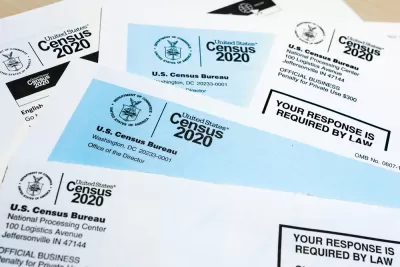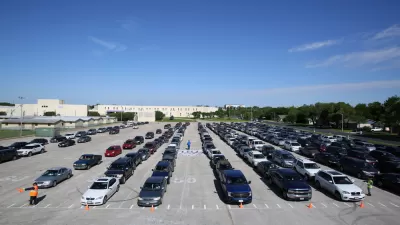The data release was delayed in part so that the agency could implement a new privacy policy aimed at protecting the identities of respondents.

Writing in Poynter, Mike Schneider cautions journalists not to forget about the 2020 Census, whose results continue to roll in, providing valuable insight into the nation’s changing demographics.
“Even though the census was conducted two years ago, the U.S. Census Bureau has yet to release its most detailed data about families, household relationships and comprehensive breakdowns of the U.S. population by age, race, ethnicity and tribal affiliation,” Schneider explains, noting that the first release of this data will come in the spring, with more releases throughout the year.
The delay comes in part due to a new privacy policy, which uses a tool known as ‘differential privacy’ that “injects random errors into the data so that information about households can’t be traced back to individuals.” For example, “Under the Census Bureau plan, sex and age breakdowns will be limited for detailed racial, ethnic and tribal groups based on the size of those groups in each state, county or place.”
Schneider outlines the tool’s use and its potential drawbacks. “Disagreements over whether differential privacy causes more harm than good have created a rift among some demographers, statisticians and researchers who use census data.” While critics argue that the tool will distort and limit data at the most local level, proponents say the Bureau is simply being more transparent about a practice that has always existed to protect the privacy of survey participants.
FULL STORY: The census may seem so 2020, but there’s still a lot for journalists to cover

Alabama: Trump Terminates Settlements for Black Communities Harmed By Raw Sewage
Trump deemed the landmark civil rights agreement “illegal DEI and environmental justice policy.”

Study: Maui’s Plan to Convert Vacation Rentals to Long-Term Housing Could Cause Nearly $1 Billion Economic Loss
The plan would reduce visitor accommodation by 25% resulting in 1,900 jobs lost.

Why Should We Subsidize Public Transportation?
Many public transit agencies face financial stress due to rising costs, declining fare revenue, and declining subsidies. Transit advocates must provide a strong business case for increasing public transit funding.

Paris Bike Boom Leads to Steep Drop in Air Pollution
The French city’s air quality has improved dramatically in the past 20 years, coinciding with a growth in cycling.

Why Housing Costs More to Build in California Than in Texas
Hard costs like labor and materials combined with ‘soft’ costs such as permitting make building in the San Francisco Bay Area almost three times as costly as in Texas cities.

San Diego County Sees a Rise in Urban Coyotes
San Diego County experiences a rise in urban coyotes, as sightings become prevalent throughout its urban neighbourhoods and surrounding areas.
Urban Design for Planners 1: Software Tools
This six-course series explores essential urban design concepts using open source software and equips planners with the tools they need to participate fully in the urban design process.
Planning for Universal Design
Learn the tools for implementing Universal Design in planning regulations.
Smith Gee Studio
Alamo Area Metropolitan Planning Organization
City of Santa Clarita
Institute for Housing and Urban Development Studies (IHS)
City of Grandview
Harvard GSD Executive Education
Toledo-Lucas County Plan Commissions
Salt Lake City
NYU Wagner Graduate School of Public Service





























